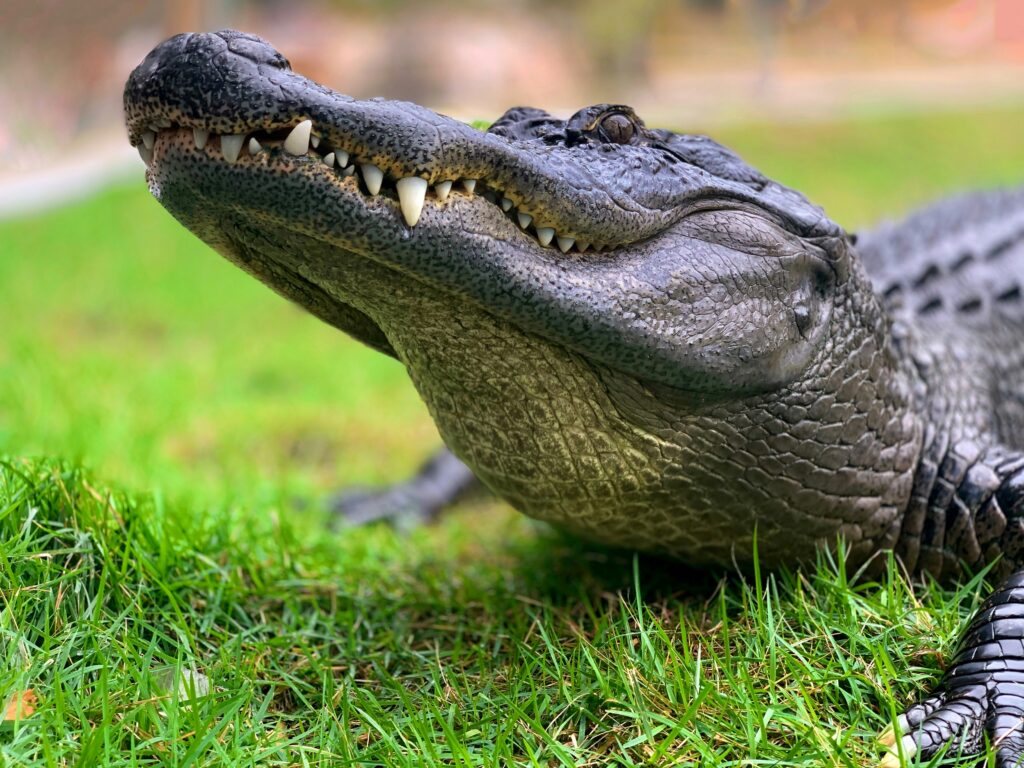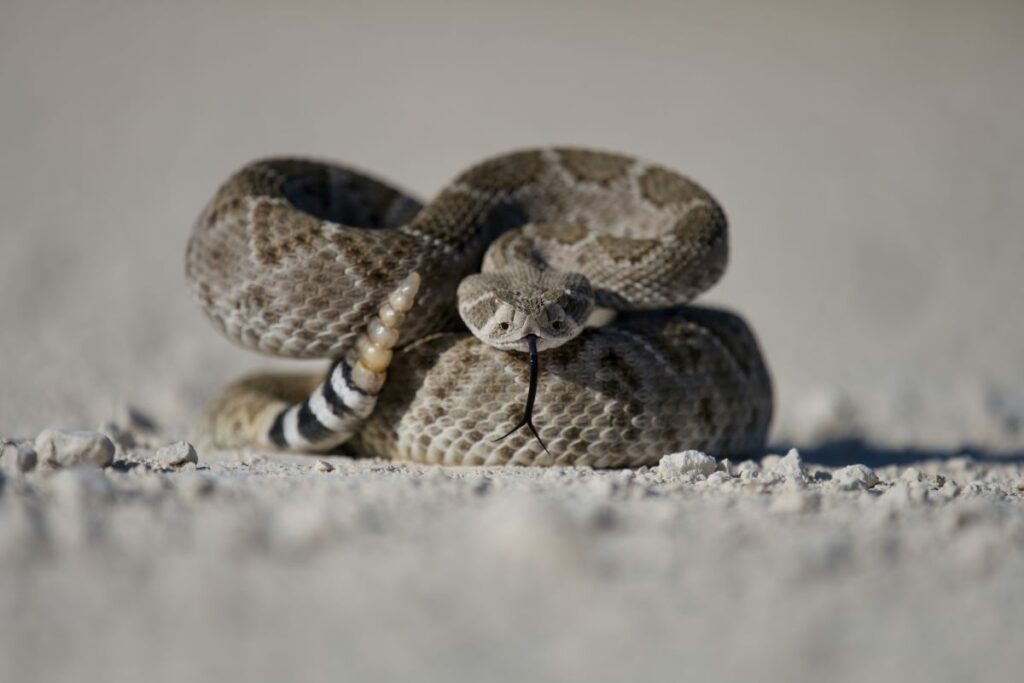As pet owners in the sunshine state, it’s important to educate ourselves about the dangerous wildlife in Florida and ways we can keep our pets safe. We’ve put together a list of the 6 most common dangerous animals in Florida and how to keep your pets safe and healthy if you spot them. Our pets are our family and we want them to enjoy a lot of the same activities we do, whether that’s swimming in the ocean, hiking in a park or enjoying our own back yard.
Dangerous Wildlife in Florida: Alligator

When you think of Florida, chances are, you probably think of alligators too. Alligators are one of the dangerous types of wildlife in Florida that can be found in every county and tend to stay near fresh or swampy water. Occasionally they can be found in salt water, but that’s not their typical habitat. Florida has roughly 1.3 million alligators in about 6.7 million acres of land.
Alligators tend to stick to easy prey and will avoid humans, unless they lose fear of them. IT IS ILLEGAL TO FEED WILD ALLIGATORS. Feeding an alligator can cause them to lose fear of humans and instead to see you as a source of food. Avoid throwing food into any body of water, as that will only attract alligators. The last thing you want while walking your pet is an alligator that believes you have food for them.
While we understand that pets are family and we want to bring them everywhere with us, avoid walking your dog near any body of water. Especially in the early morning hours or evenings. These are the alligators homes and it can be hard to spot a lurking alligator in the water. Your pet may unexpectedly attract an alligator and that’s a situation you never want to find yourself in.
“If you encounter an alligator that is believed to pose a threat to people, pets or property, call the FWC’s Nuisance Alligator Hotline, toll‐free at 1‐866‐FWC‐GATOR (392‐4286). The FWC’s Statewide Nuisance Alligator Program (SNAP) uses contracted nuisance alligator trappers throughout the state to remove alligators 4 feet in length or greater that are believed to pose a threat.” (Taken directly from FWC)
If you or your pet get bitten by an alligator, it is important that you seek medical care immediately. Contact VEC for pet emergencies or call 911.
Source: https://myfwc.com/media/1776/human-alligatorincidentfactsheet.pdf
Dangerous Wildlife in Florida: Bears
Bear attacks are another common danger we see fairly often. Bears are extremely attracted to food and it’s very important that we minimize their ability to get it from us. If you ever have pet food outside, consider only having it out for a short period of time or bringing it inside altogether. This goes for pet food, bird seed, scraps. Anything that a bear could consider food. For your trash cans, make sure they are either in a bear resistant can or an area completely secured off from bears.
When letting your pets outside, shine a flashlight into the yard and make some noise before you let your pet out. We want to be the first ones to spot the bear, NOT our pets. Another precaution would be to consider installing motion detector lights around your property.
If possible, consider walking your pet during the daytime. Bears are most active in the early morning or late evenings. And no matter what time you walk your pet we recommend ensuring that you are making noise the whole time and carrying bear spray.
While these tips are for bears, we also want to point out that the same precautions need to be taken for coyotes as well. For more bear/coyote safety click here.
Dangerous Wildlife in Florida: Feral Hogs
Another dangerous wildlife in Florida that may pose a threat to our pets are feral hogs. They can carry at least 30 viral diseases and nearly 40 parasites. Our pets can be exposed to these pathogens through contact with the hog, contaminated solid waste or by using feeding or watering containers that have also been contaminated. It’s important to make sure your pet doesn’t eat any unknown substance as infected tissues, organs and meat can also carry the pathogens as well.
Always be away of your surroundings and keep a close eye on your pet and what they put in their mouth. If your pet displays any sign of illness, fever, lethargy, swelling in joints, respiratory or reproductive problems, contact your vet immediately.
Source: https://www.aphis.usda.gov/operational-wildlife-activities/feral-swine/damage-people-pets
Dangerous Wildlife in Florida: Venomous Snakes

There are six different species of venomous snakes here in Florida. They are the Harlequin Coralsnake, the Eastern Copperhead, the Florida Cottonmouth, the Pygmy Rattlesnake, the Timber Rattlesnake and the Eastern Diamond-backed Rattlesnake. Like most animals, they tend to run away when they see you and don’t typically bite unless they feel endangered.
I’m sure most of us are just fine with leaving snakes alone, but for a curious puppy, they might think they’ve found a new friend. If you know you’ll be walking your dog in a highly populated snake area, it’s important that you consider keeping your pet on a leash. Especially if your pet is the curious type. Another thing to consider is enrolling your pet in positive reinforcement snake avoidance training.
If you or your pet are bitten by a venomous snake, seek medical attention right away.
Source: https://www.floridamuseum.ufl.edu/florida-snake-id/safely-coexist-with-snakes/
Dangerous Wildlife in Florida: Jellyfish
Ah. Jellyfish. They’re squishy, transparent, slimy. Such a fascinating animal… until you get stung by one. While it’s very unlikely that your pet will die from a jellyfish sting, they are still considered as dangerous wildlife in Florida. A sting from one of them can cause quite a bit of discomfort for our furry friends. The most common symptoms of a jellyfish sting are:
- Nausea, retching and vomiting
- Itching
- Swelling
- Excessive drooling
- Muscle cramps
- Licking affected area
- Difficulty breathing
- Quiet and lethargic
- Licking affected area
Symptoms can begin from 2 minutes to 3 hours after the sting and could last up to 48 hours. Even if a jellyfish looks dead, keep your pet away. Jellyfish can still sting for several weeks after they’ve died.
If your pet gets stung by a jellyfish, pull the remaining tentacles off with a stick or towel. You never want to come in contact with the tentacles. Clean the area with sea water instead of fresh water and avoid rubbing the injured area. As with all medical emergencies contact your vet right away.
Dangerous Wildlife in Florida: Fire Ants
Last, but definitely not least, are fire ants. These invasive insects are quite the dangerous wildlife in Florida and can attack in unison and bite repeatedly. While they don’t pose a huge threat to larger animals, in rare cases they could kill a small pet.
Fire ants prefer large open sunny areas, making a back yard the perfect breeding ground for them. If you let your dog outside on their own, we highly recommend checking your yard daily for new mounds that could appear. Teach your pet to avoid these mounds and to preferably lie in the shade where they aren’t as active.
Your pets fur can act as a small deterrent to ant bites, but they will still go after their noses, ears, eyes, feet and mouth. If you think your pet has been bitten, check all of these areas and try to brush the ants off with a pet brush. You never want to spray your pet with water as this will only cause the ant to hold on stronger and bite more. Depending on how severely your pet was bitten, you may need to contact your veterinarian.
Source: https://fireant.tamu.edu/files/2014/03/ENTO_014.pdf

